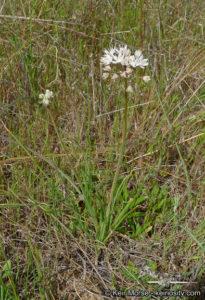
Using garlic and onion makes good sense any time of year
While the winter is traditionally called “cold and flu season,” did you know there is no scientific evidence for this assumption? The usually reliable, well-researched, and equally entertaining Straight Dope examines this question and the various theories. In any case, and at any time of year, there are lots of good reasons to use garlic, both internally and externally, provided it agrees with your constitution. (Consult an Ayurvedic doctor if you’re not sure.) A very thorough article from cookingdetective.com lists and explains “39 Health Benefits of Garlic.” I think you’ll find it informative and useful.
Unfortunately, garlic is not native to Southern California or anywhere in the U.S., for that matter. The only place you’re likely to find it growing wild is near a cultivated garlic field. We are blessed, however, to have at least one related plant, Red-Skinned Onion (Allium haematochiton), that I’ve found in the Santa Ynez Mountains between Ojai and Santa Barbara. Wild onions are much more common in wetter climates such as in the High Sierras where you are likely to run across fields of them.


Onions and garlic are both in the Alliaceae family, commonly known as the Onion and Garlic Family. They are not identical biochemically but they do share many of the same healing and anti-bacterial properties. Both can be grown in backyard gardens almost anywhere; in fact, I recently planted some since they do better in the winter around here. And just like that, I’ve brought this post full-circle back to the winter for you writers who notice such things.

